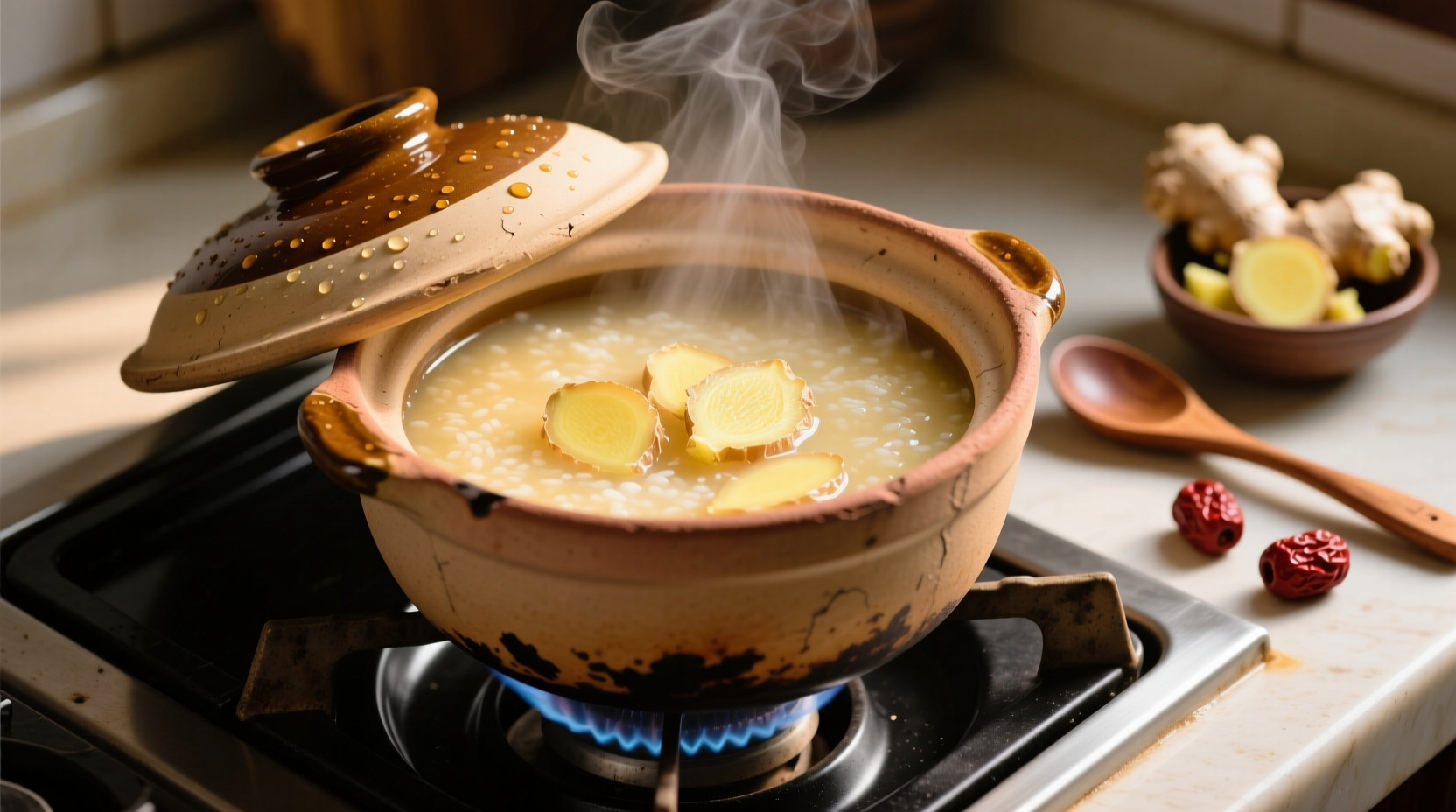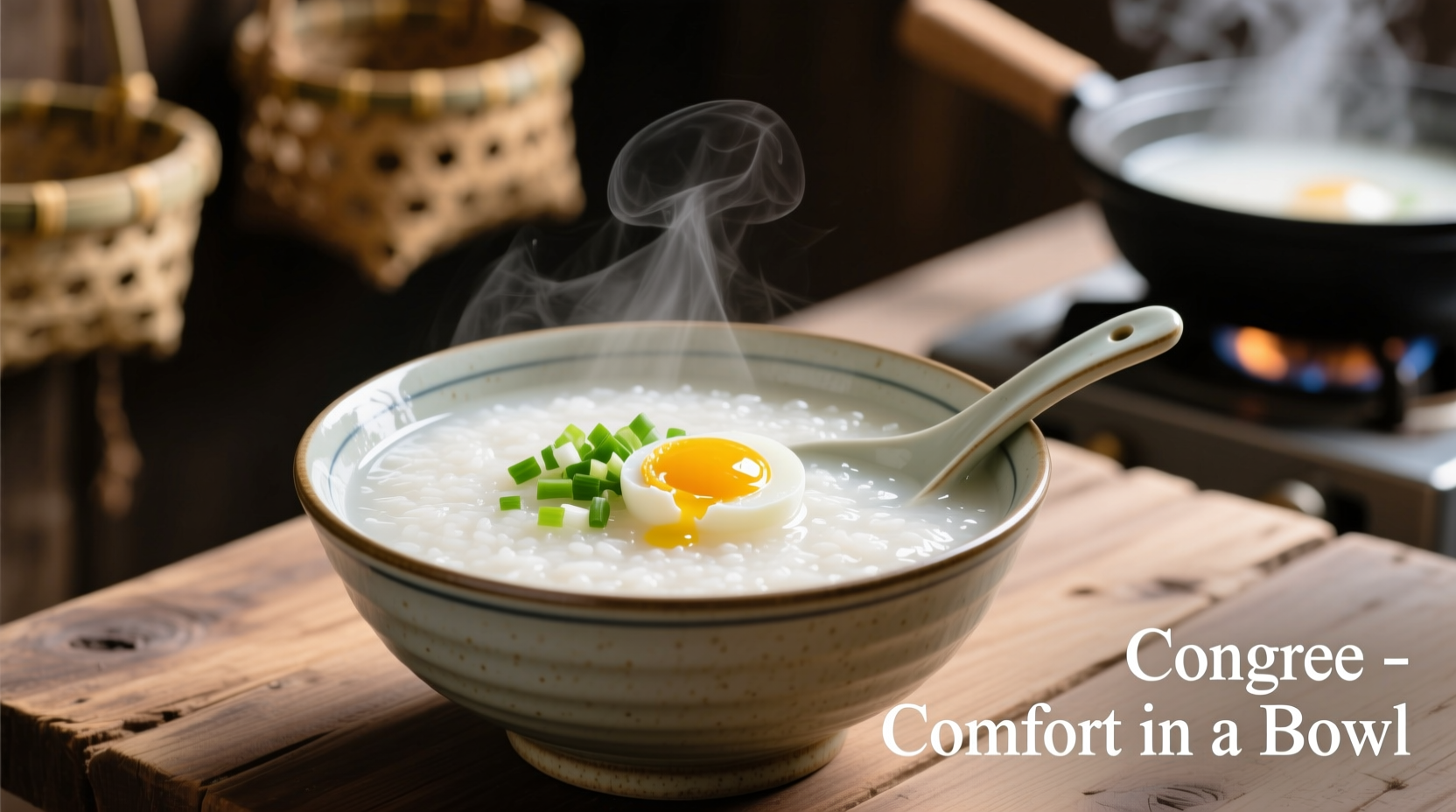Congee is a traditional Asian rice porridge made by simmering rice in a large amount of water or broth until it breaks down into a creamy, smooth consistency. This nourishing dish has been consumed across Asia for over 2,000 years, serving as both everyday comfort food and medicinal remedy for digestive issues.
When you search what is congee food, you're likely looking for more than just a basic definition. You probably want to understand why this simple rice dish holds such cultural significance across Asia, how it differs from Western porridge, and whether it offers genuine health benefits beyond comfort. This guide delivers exactly that - a comprehensive exploration of congee's history, preparation methods, regional variations, and practical ways to incorporate this versatile dish into your diet.
The Ancient Origins of Congee: More Than Just Rice Porridge
Understanding what is congee food requires examining its historical roots. Archaeological evidence suggests congee originated in China during the Zhou Dynasty (1046-256 BCE), with the earliest written record appearing in the Classic of Poetry from the 11th century BCE. Unlike Western porridge typically made from oats, congee's foundation is rice - a staple that shaped Asian civilizations.
Congee Evolution Timeline
- 1046-256 BCE: First documented consumption during China's Zhou Dynasty
- 206 BCE-220 CE: Spread throughout Asia via Silk Road trade routes
- 7th century CE: Mentioned in Japanese medical texts as therapeutic food
- 15th century: Documented in Korean royal court cuisine records
- Modern era: Global popularity surge as digestive health awareness grows
What Exactly Makes Congee Different From Regular Porridge?
The fundamental difference between what is congee food versus Western porridge lies in ingredients, preparation, and cultural context. While both are grain-based comfort foods, congee specifically uses rice as its base grain and requires a much higher water-to-rice ratio (typically 8:1 to 12:1) compared to oatmeal's 2:1 ratio.
| Characteristic | Congee | Western Porridge |
|---|---|---|
| Primary Grain | Rice | Oats |
| Water Ratio | 8:1 to 12:1 | 2:1 |
| Texture Goal | Creamy, uniform consistency | Thick, grain-retaining |
| Traditional Serving Time | Breakfast or medicinal | Primarily breakfast |
| Cultural Significance | Spiritual, medicinal, everyday | Mainly nutritional |
How Authentic Congee Is Prepared: Technique Matters
Creating proper congee requires specific technique that transforms ordinary rice into something extraordinary. The process begins with short-grain rice (like japonica) simmered gently for 2-3 hours with constant attention to water levels. Professional chefs recommend starting with cold water and rice together, then bringing slowly to a boil before reducing to the lowest possible simmer.
"The secret to perfect congee isn't just the ratio, but the patience," explains Chef Liu Wei, master of Chinese cuisine. "You're not just cooking rice - you're coaxing starches out of the grains through gentle agitation and time. Rushing creates uneven texture."

Regional Variations: What Is Congee Food Around Asia?
While many search what is congee food expecting a single definition, the reality is congee manifests differently across Asia:
- China (zhou): Often served plain with century eggs or preserved meats
- Japan (okayu): Typically made with glutinous rice, served with umeboshi
- Korea (juk): Frequently includes ingredients like abalone or pine nuts
- Thailand (jok): Usually includes minced pork and ginger
- Vietnam (cháo): Often features chicken and fish sauce
These variations demonstrate how what is congee food depends heavily on cultural context. In Thailand, congee often appears street-side with bold flavors, while Japanese okayu serves as recovery food after illness.
When and Why People Eat Congee: Contextual Understanding
Understanding what is congee food requires recognizing its contextual applications. Unlike Western breakfast foods consumed primarily for convenience, congee serves specific purposes across different situations:
- Medicinal context: When recovering from illness (especially digestive issues)
- Ritual context: Served during Chinese New Year for prosperity
- Everyday context: Common breakfast item in many Asian households
- Special occasion context: Served at baby's first rice ceremony in Korea
Notably, congee's role changes dramatically based on circumstance. What serves as comfort food during illness transforms into celebratory dish during festivals. This contextual flexibility explains why searching what is congee food yields such varied results.
Nutritional Profile: Beyond Simple Comfort Food
While often perceived as simple comfort food, congee offers significant nutritional benefits when prepared thoughtfully. A basic rice congee provides easily digestible carbohydrates, while additions like lean meats, vegetables, and medicinal herbs transform it into complete meal. According to research published in the Journal of Ethnic Foods, traditional congee preparations often incorporate ingredients specifically chosen for their digestive properties.
Nutritionally, congee's value comes from its versatility. Unlike Western porridge which typically follows standardized recipes, congee adapts to nutritional needs - adding protein sources for recovery, bitter herbs for detoxification, or sweet elements for energy.
How to Make Basic Congee at Home: Practical Guide
Creating authentic congee requires minimal ingredients but maximum attention to technique. For beginners searching what is congee food with intention to prepare it, follow these steps:
- Use short-grain rice (1 cup) to water (8-10 cups) ratio
- Combine cold water and rice in heavy pot
- Bring slowly to boil, then reduce to lowest simmer
- Simmer 2-3 hours, stirring occasionally
- Add salt to taste near end of cooking
- Serve with traditional accompaniments like pickled vegetables
For quicker preparation, modern cooks often use instant pot methods (30-40 minute cooking time), though traditionalists argue this compromises texture development. Regardless of method, proper congee should have uniform creamy consistency without distinct rice grains.
Common Misconceptions About Congee
Many people researching what is congee food encounter several persistent myths:
- Misconception: Congee is just watery rice
Reality: Proper congee has transformed starch creating creamy emulsion - Misconception: All Asian rice porridges are identical
Reality: Regional variations differ significantly in ingredients and purpose - Misconception: Congee lacks nutritional value
Reality: Traditional preparations balance easily digestible carbs with medicinal herbs
Understanding these distinctions separates authentic knowledge from oversimplified explanations often found online.











 浙公网安备
33010002000092号
浙公网安备
33010002000092号 浙B2-20120091-4
浙B2-20120091-4